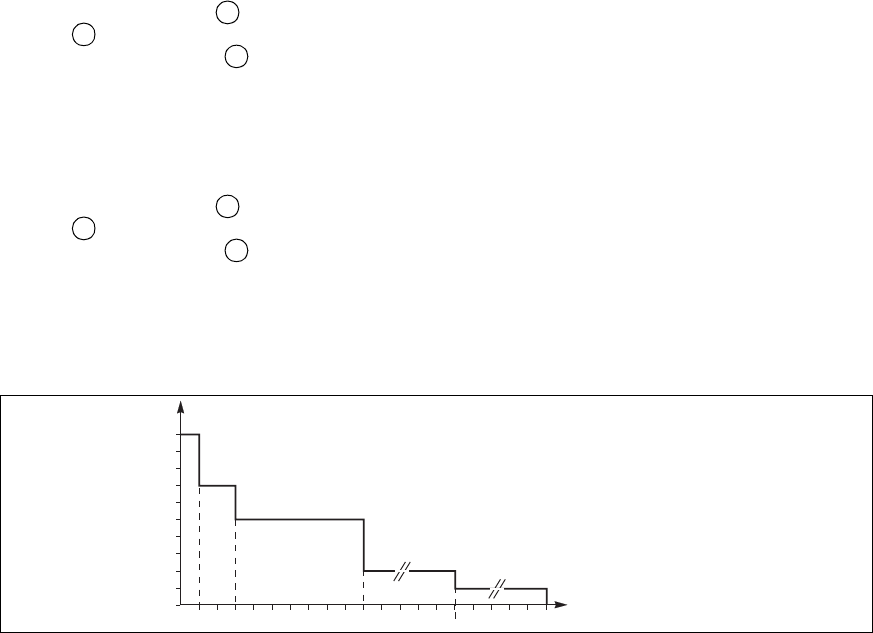
34006452EN/AC - Page 13
Introduction
Frequency converters without redundancy
Frequency converters with redundancy
Overload curve
Fig. 17
Output voltage quality and continuity
Steady state voltage regulation:
Note:
Transient voltage regulation:
– in the event of a shutdown, the load is no longer supplied with power;
– in the event of a major transient overload (greater than 160 % of the rated load), the inverters will current limit to 160 %
of their rated current for 1 second before stopping;
– in the event of a small but extended overload (i.e. a continuous level of power exceeding the full rated load), the inverters
will continue to supply power for a period depending on the magnitude of the overload (10 minutes for a 125 % overload,
1 minute for a 150 % overload, see figure 17), and then stop;
– in all three of the above cases, inverter shutdown results in the following on the control panel of the concerned unit:
– green "load protected" light off,
– buzzer on,
– red "load not protected" light on.
– the shutdown of one unit is of no consequence for the load. The other lines each take up an equal amount of load power
and the load continues to be supplied normally;
Inverter shutdown results in the following on the control panel of the concerned unit:
– green "load protected" light off,
– buzzer on,
– red "load not protected" light on.
– in the event of an overload, the system only loses its redundancy as long as the overload is less than the total rated power
of the functioning units. If the overload is greater, the operating mode is that previously described for systems without
redundancy.
The output voltage is stable in amplitude and frequency and is free of interruptions or transients outside specified tolerances,
irrespective of Mains 1 or load disturbances (outages, load step changes, etc.).
For stable or slowly varying load conditions, the inverter output voltage is regulated to within ±0.5 % in amplitude.
The frequency of the output voltage can theoretically be regulated to within 0.1 % of the rated value, however the output
frequency range may be intentionally extended to a maximum of ±2 Hz so that the inverter can remain synchronized with
Mains 2 and its inherent frequency fluctuations, thus enabling transfer of the load to the bypass line at any time.
The output frequency range can be personalized and if necessary modified on the customer site by a qualified support
technician from ±0.25 Hz to ±2 Hz in 0.25 Hz steps.
When the Mains 2 voltage moves outside this frequency range, the inverter is desynchronized and operates in "free running"
mode, with the output frequency regulated to a high level of accuracy by a quartz oscillator.
When the Mains 2 frequency returns to within the specified tolerances, the inverter is gradually re-synchronized to the bypass
line at a rate of 0.5 Hz to 2 Hz/s (as per the value personalized by the after-sales support department), thus avoiding exposing
the load to sudden frequency variations.
The inverter output voltage is not notably affected by instantaneous major variations in load characteristics.
This is due to the PWM (Pulse Width Modulation) chopping technique and the microprocessor-based regulation system that
instantly compensates for any variation. In particular, the inverter output voltage remains within ±5 % of the rated voltage for
load step changes of 25 to 100 % or of 100 to 25 %.
5
1
2
5
1
2
I
12345678910
1,5 In
1,35 In
1,25 In
1,10 In
1,05 In
In
t
30 120
(minutes)


















